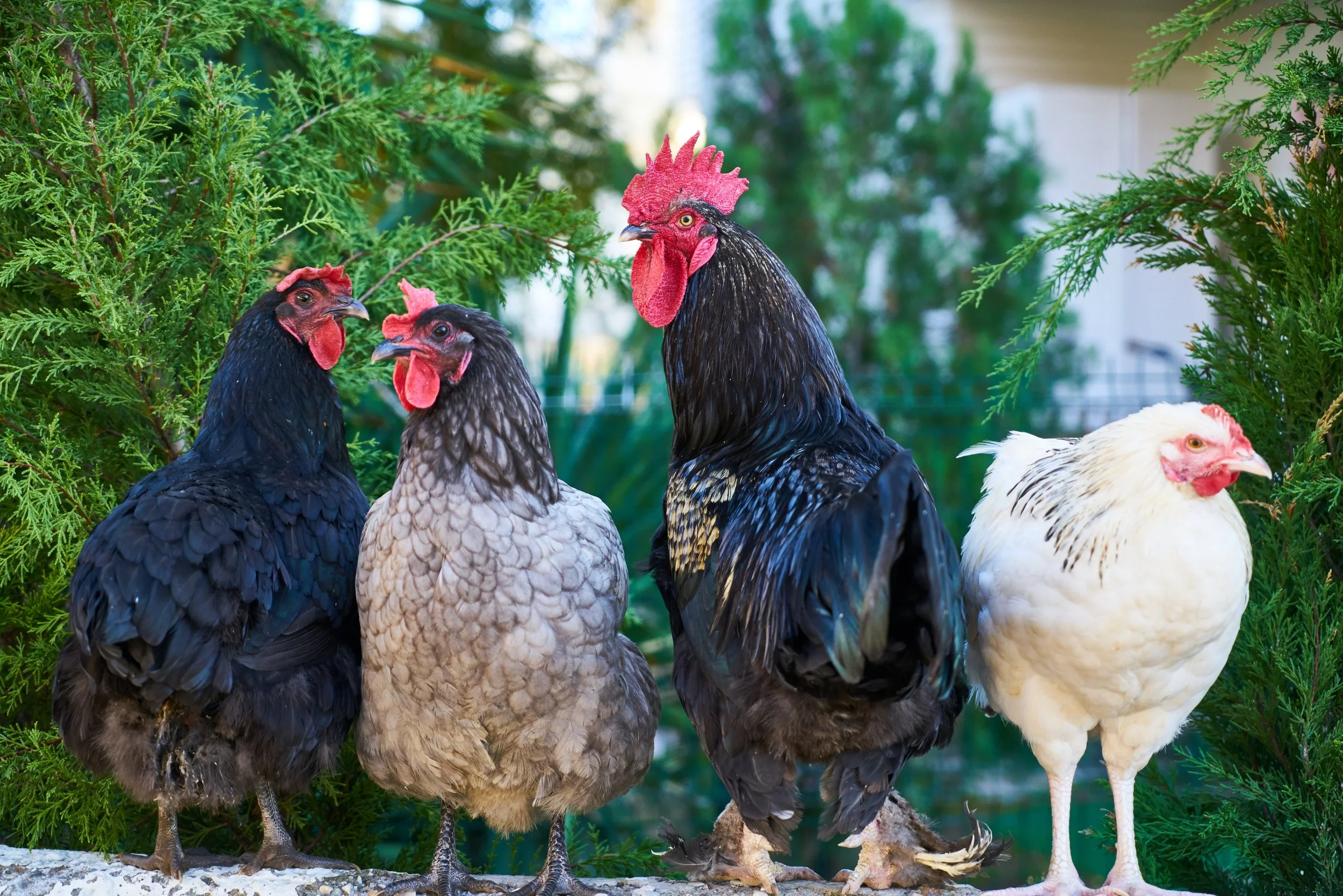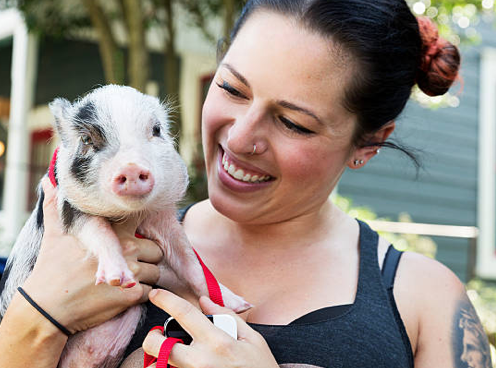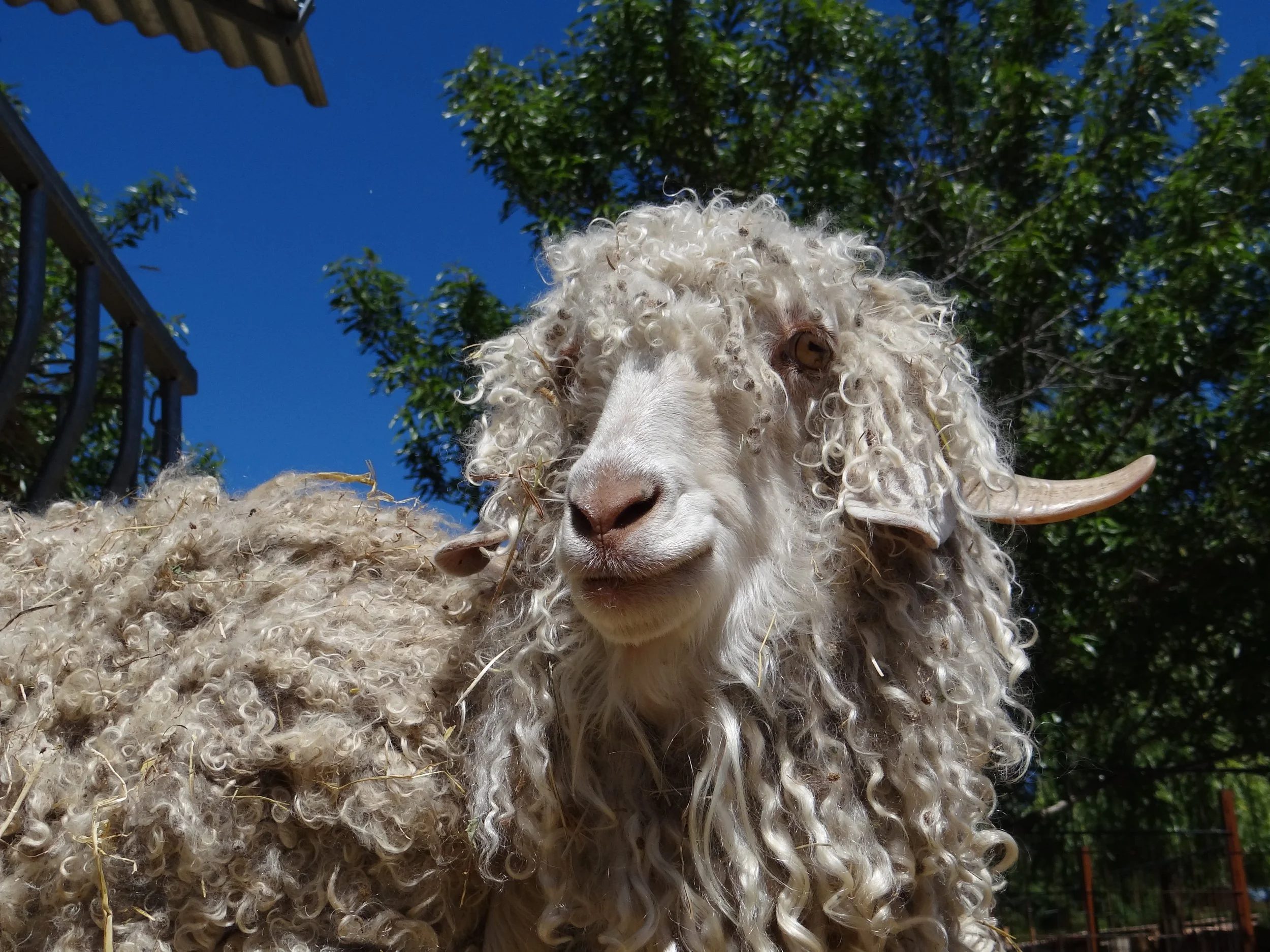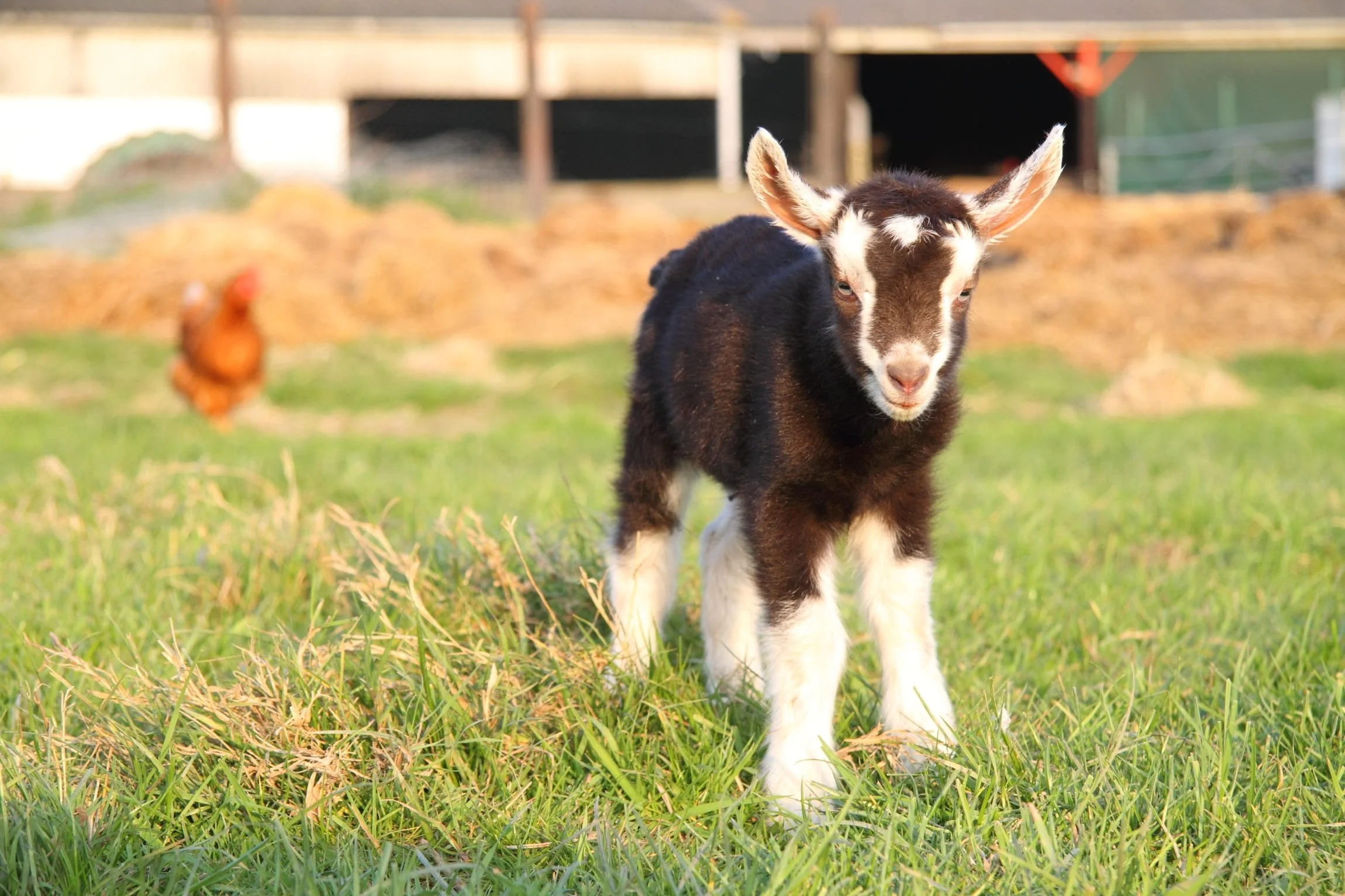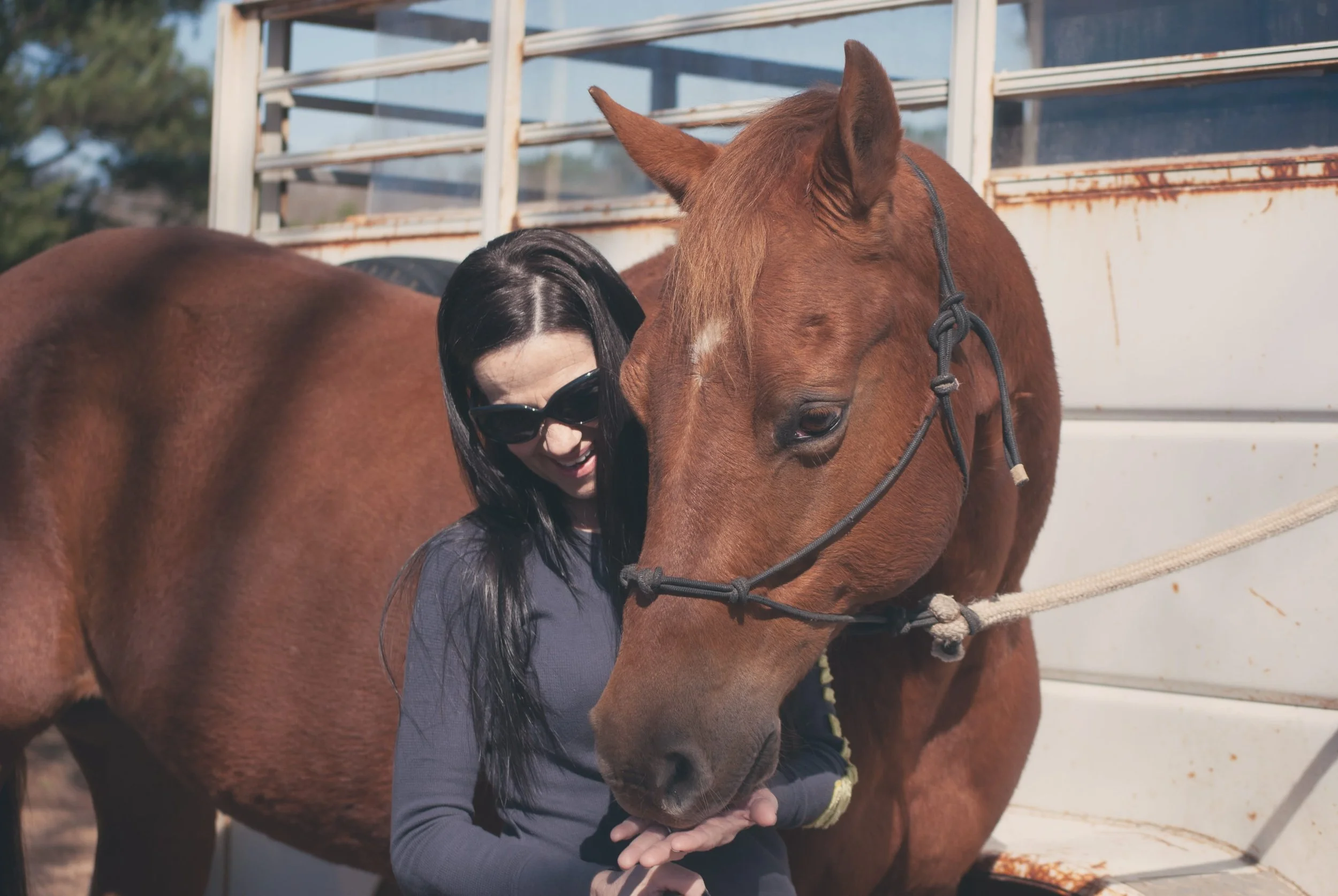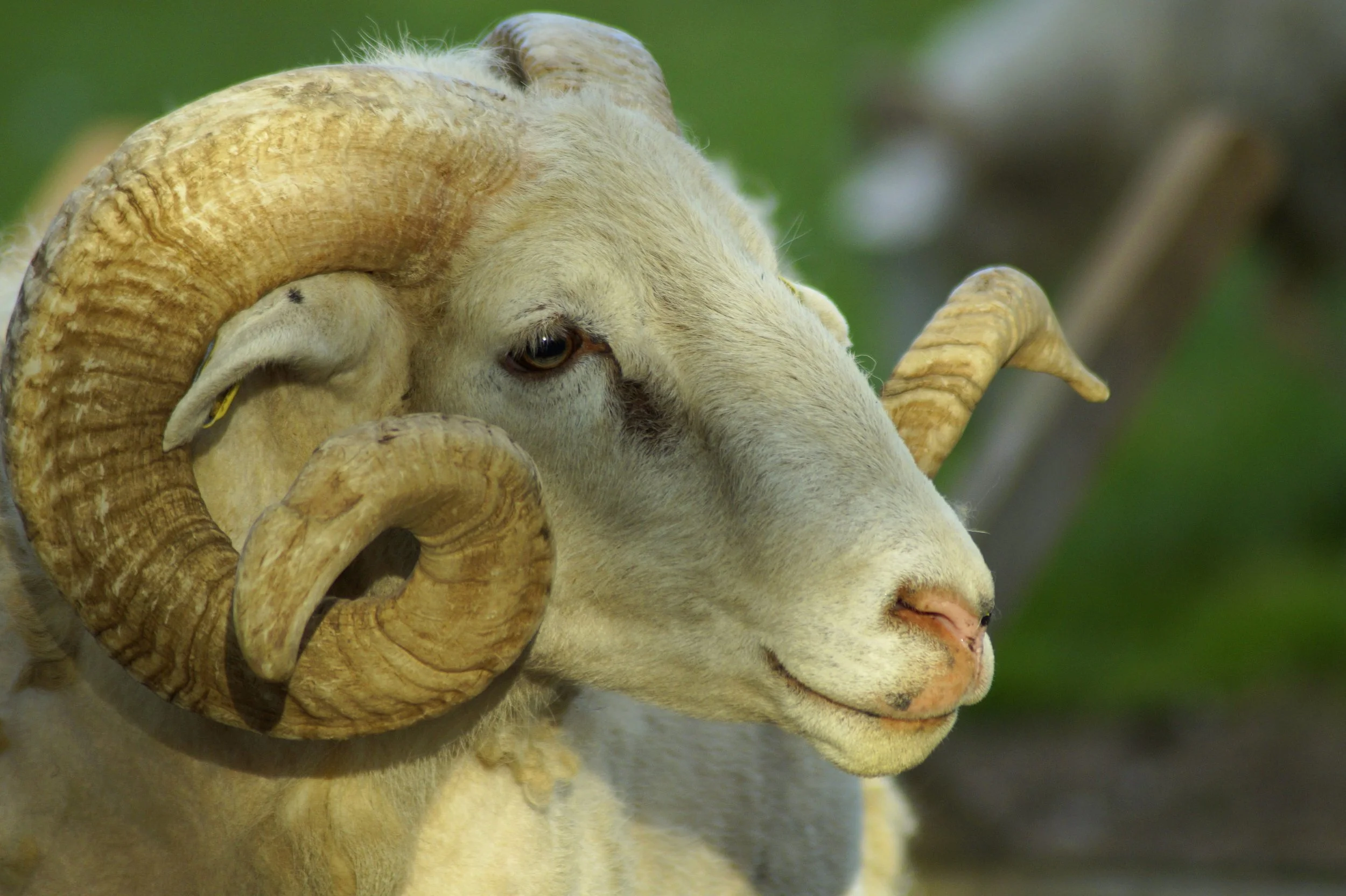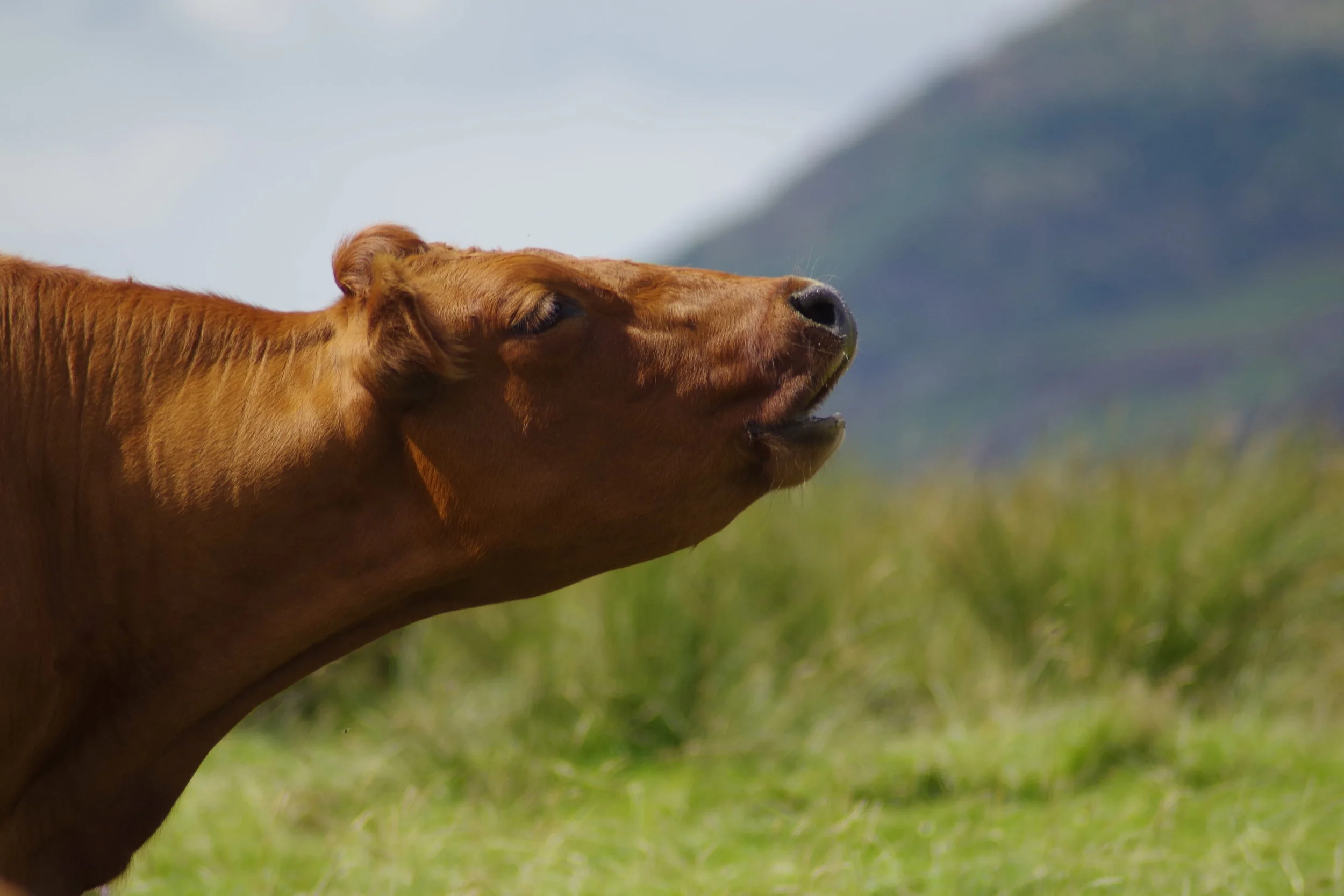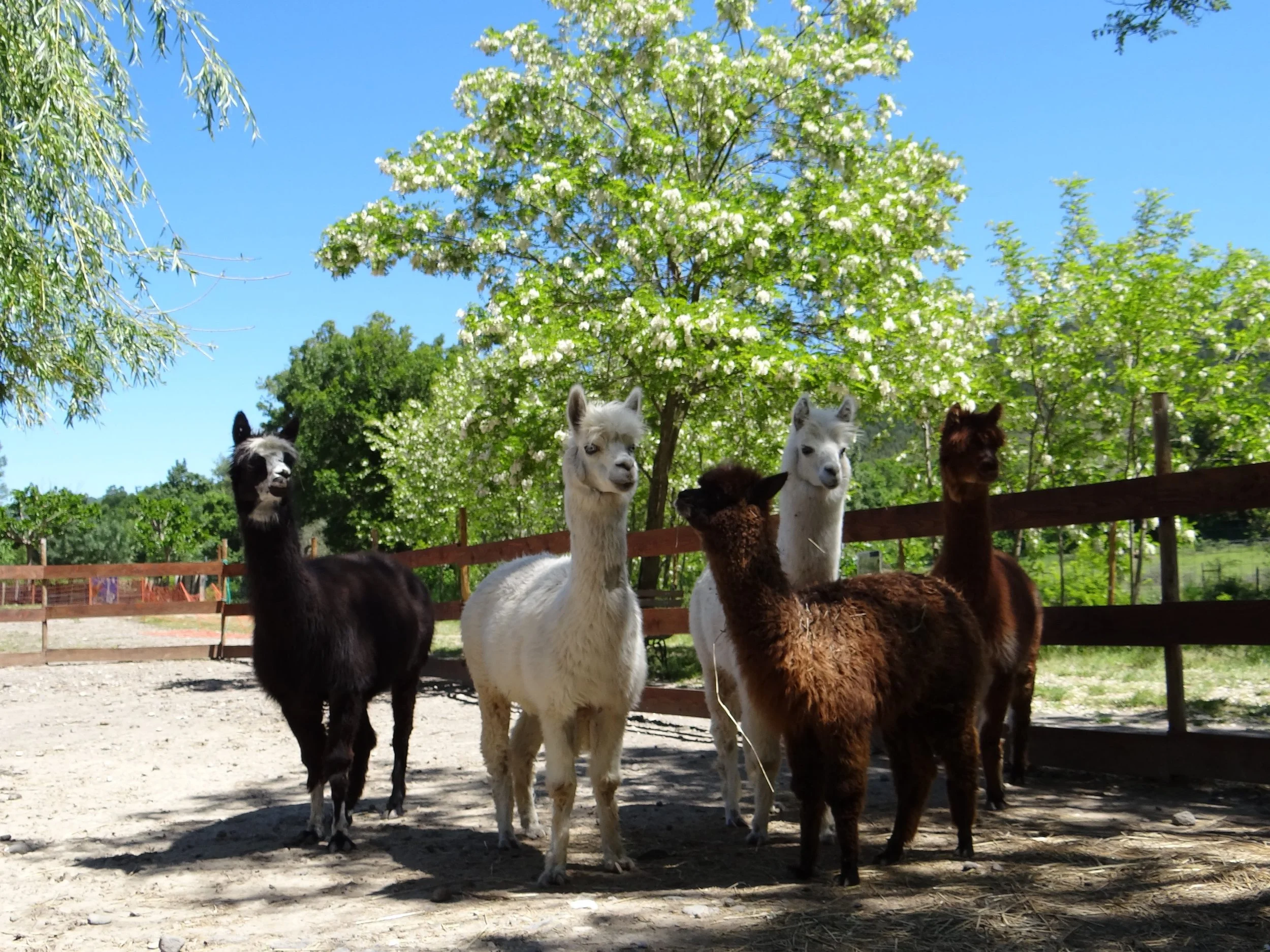What Are Pinworms?
Pinworms are tiny worms (approximately 1-5 cm long) that can be found in the intestinal tract of horses.
The scientific name for equine pinworms is Oxyuris equi.
Pinworms can be found in horses of any age, but problems are more
common in young horses.
Problems with pinworms are associated with the adult form of the parasite.
It takes about five months from the time livestock or a horse is infected with the larvae for pinworms to grow to adults.
What Problems Do Pinworms Cause In Horses?
Pinworms often cause no problems at all in horses. When they do become an issue, they are more of an annoyance than a significant health problem.
Although pinworms live in the intestinal tract, that is not where they cause problems - female pinworms actually crawl out of the horse’s rectum and deposit a very sticky substance on the skin around the anus. This sticky substance contains the pinworm eggs.
This sticky substance, not the eggs, causes the problem, because it can be very irritating. Affected horses typically rub their tails against objects because of the itching and irritation of the anus caused by the sticky substance. This can lead to hair loss over the
tailhead and a “rat-tailed” appearance.
How Do Horses Get Pinworms?
Horses become infected by swallowing pinworm eggs. This may happen if they come in direct contact with the eggs on an infected horse, or if they eat eggs on pasture or hay that have fallen off an infected horse.
How Is Infection With Pinworms Diagnosed?
The adult pinworms are rarely seen, because they usually crawl out to lay their eggs at night.
The most common way to diagnose pinworm infection is to look for pinworm eggs under a microscope.
How Are Pinworms Treated?
Most dewormers are effective against adult pinworms, including ivermectin, moxidectin, fenbendazole and pyrantel pamoate, although resistance to ivermectin has been reported in some areas.
There is very little that can be done to treat the irritation of the horse’s tailhead directly, but it will resolve on its own once the pinworm infection has been treated.
If the horse has rubbed its hind end to the point that the skin is broken or raw, keep the area as clean as possible and watch for signs of infection (e.g. discharge, foul smell). If the area appears infected or does not seem to be healing, contact your veterinarian. The horse may need to be treated with antibiotics to eliminate the infection.
What Do Faecal Worm Egg Counts Tell Us?
What is a worm egg count?
A fecal worm egg count (FEC) is done on manure to look for worm eggs. It is quantitative versus qualitative in that the result is expressed as the number of eggs per gram (epg) of manure as opposed to "positive" or "negative" or "+, ++, or +++" results that are often given from simple flotation procedures. A quantitative result gives us a means to quantify changes over time or in response to a treatment.
What are we measuring?
The worms we are most concerned about are in the roundworm family and live in the stomach and intestines of Livestock and Horses. The ones of most importance in our region are in the trichostrongylid family and all have similar life cycles. Adult worms expel eggs that pass outward in feces (manure). These eggs hatch into larvae on pastures under favorable conditions of moisture and temperature. When the worm larvae are ingested by Livestock and Horses, they develop into adult worms in the gastrointestinal tract and begin the cycle all over again.
What can we use worm egg counts for?
There are three main uses for worm egg counts. They are to detect dewormer resistance, to monitor pasture contamination, and to select animals for their genetic ability to resist worms.
What are some limitations of worm egg counts?
First off, FECs are estimates. However, they have 83% precision. There is some day-to-day variability in counts even in stable worm populations. The count can also be influenced by the type of forage the animals are eating with respect to its digestibility and its water content. Very loose stools are somewhat diluted, which causes some underestimation of the actual egg count. In addition, there are different ways of performing quantitative egg counts, and the method can influence the magnitude of the result. We use Various Techniques: Baermann, Floataion, Stoll, Roepstoff and Nansen and more.
Secondly, FECs are a snapshot in time. They reflect the degree of egg shedding and pasture contamination at that point in time. Mature Haemonchus contortusfemales may produce (depending on the author) 3,000–10,000 eggs per day. However, immature worms may not produce many eggs, but they still suck blood. As the immature worms age over a couple of weeks, their egg production increases. Depending on the level of pasture contamination, FECs can rise considerably in a short time.
FECs do give us some information about what is happening at the time the samples are taken and can be generally reflective of worm burdens.
How are worm egg counts used to detect dewormer resistance?
Perhaps the most common approach used for Livestock and Horses is to 1) collect about eg 15 samples from animals at the time they are treated; 2) perform the individual egg counts and determine the average FEC for the group; and 3) then collect samples again from those animals at a later time and again determine the average FEC for the group. If the dewormer is working as we would like it to, there should be at least a 95% reduction in the average FEC for the post-treatment samples as compared to the pre-treatment samples. It is often best to sample the same animals both times, but if 15–20 animals that accurately represent the group are used, it is not necessary.
Because dewormers in a specific class can temporarily lower egg production in worms, manure samples should be collected about 8–10 days or 14–17 days, respectively, after using them. Manure samples can be collected as quickly as 5–7 days post-treatment. If more than one dewormer class is being examined at a time, a 14–17 day post-treatment interval should be used with the caution that occasional dewormer classes sometimes does not kill all immature stages of worms, which could result in seeing eggs from them at 14–17 days.
An alternative approach, and certainly the best one if enough animals are available, uses an untreated control group of animals. In this approach, the test group of 15 or more animals is treated with a dewormer, and then after the appropriate post-treatment period has passed (see above), FECs are determined on samples from the animals in the treated group and from a group of untreated animals of similar age, weight, and parasite exposure. As in the other method, we are looking for at least a 95% reduction in average FEC in the treated group compared with the untreated animals. This method accounts for reductions in egg counts in the groups during the post-treatment interval that might not be attributable to the dewormer as well as increases in egg counts resulting from maturing worms. It has the additional advantage of requiring considerably fewer total samples to be examined if several drugs are being tested at the same time. Pre-treatment egg counts are not required, and several test groups can be compared to the same control group. You do have to know, or expect, that average egg counts will be above at least 250 epg in the control group for valid comparisons. An electronic spreadsheet-based calculator is available; it will do the calculations and will also indicate "suspected resistance" to a dewormer based on statistical analysis of the input data.3 livestock can be used with either approach but don't mix the two in a test.
Deworming The Foal
Young foals are generally more susceptible to parasites than adult horses. Exposure begins early.
Gastrointestinal parasite of concern in the foal is ascarids. Another parasite, Strongyloides westeri, can be passed from dam to foal in the milk.
Deworming program should include dewormers that are effective against mature parasites and migrating or encysted larvae.
Ensure to do worm egg counts Ascarid's early
While any worm can affect your foal, the most significant parasites are ascarids, also known as roundworms. Ascarids prey on the naïve immune systems of horses less than 18 months old and can cause depression, respiratory disease, stunted growth, diarrhea, constipation and potentially fatal colic.
Immature ascarid larvae migrate through the foal's liver and lungs. During their migration through the lungs, immature ascarid larvae cause inflammation resulting in low-grade fever, nasal discharge and cough. Persistent lung inflammation may make your foal more susceptible to other bacterial respiratory diseases. Following their several-week migration through the lungs, ascarid larvae are coughed up, swallowed and passed into the small intestines where they complete their development and begin laying eggs.
Heavy burdens of developing larvae and adult roundworms in the foal's small intestine can cause weight loss, poor condition, loss of energy, pot belly and a life-threatening impaction that can result in fatal bowel rupture. As the horse matures into his second year of life, he develops a heightened immune response to ascarids, and the threat greatly diminishes.
To ensure your foal stays healthy, the best procedure is to develop a regular parasite control program that never allows a large population of ascarids to become established within your foal and jeopardize his health while also preventing large numbers of adult worms from shedding eggs that will contaminate your pasture for years to come.
Recommended deworming schedule for foals
Discuss this sample deworming schedule with us in case you need to adjust based on your location (We have location monitoring for your area), your farm, your foal's parasite burden and the dewormers that are most effective based on faecal examinations.
Age Recommendation
2-4 months Treat for ascarids
4-6 months Treat for ascarids and small strongyles
8-10 months Treat for ascarids, small and large strongyles and pinworms. Treat for tapeworms. Treat for bots.
10-12 months Treat for ascarids, small and large strongyles and pinworms. Treat for tapeworms. Treat for bots.

